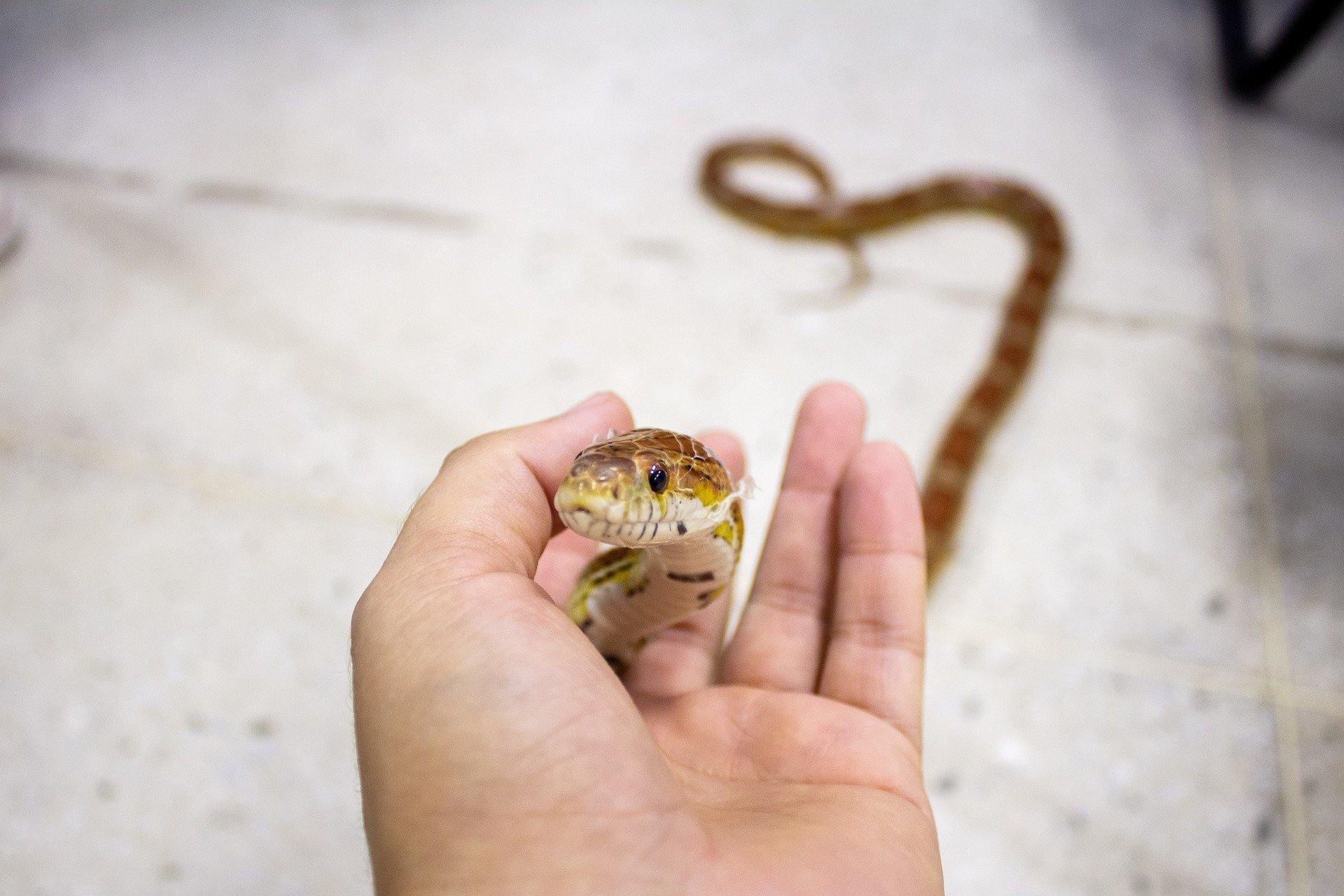Discover Exotic Options: Snake for Sale Listings Revealed
Discover Exotic Options: Snake for Sale Listings Revealed
Blog Article
Exactly How to Produce the Perfect Habitat for Your Pet Dog Snake
Producing the suitable environment for your family pet snake is vital to guaranteeing its health and wellness and wellness. From choosing the best enclosure to offering the appropriate temperature and moisture degrees, there are different elements to consider when setting up an environment that simulates your snake's natural setting. By recognizing the certain requirements of your serpent species and implementing the required aspects in its habitat, you can produce a room where your family pet can flourish. Let's discover the essential components that enter into making the best home for your slithery buddy.
Selecting the Right Enclosure
Choosing the ideal enclosure is vital in providing an appropriate space for your pet snake. The room works as the serpent's key habitat, affecting its general health and behavior. When choosing a room for your animal snake, there are a number of variables to consider to guarantee a comfy and secure setting. The dimension of the unit is vital, as it ought to be roomy sufficient to enable the serpent to walk around easily. A basic guideline is to give an environment that goes to the very least as long as the serpent's size and vast sufficient for it to stretch out conveniently.
Additionally, the product of the unit is crucial. Units can be made from glass, pvc, plastic, or wood, each with its advantages and disadvantages. Glass rooms are prominent as they provide good presence, while plastic rooms are lightweight and easy to clean. Timber and PVC units provide outstanding insulation, which is essential for regulating temperature and moisture levels within the habitat. Inevitably, the room ought to mimic the serpent's natural environment as carefully as possible to ensure its wellness and happiness. snake for sale.
Establishing Temperature and Moisture Degrees
In order to offer a helpful living atmosphere for your family pet serpent within the picked enclosure, interest to maintaining ideal temperature level and humidity degrees is paramount. Serpents are ectothermic animals, implying they depend on external sources to control their body temperature. For a lot of serpent species, the suitable temperature varieties in between 75-85 ° F(24-29 ° C) on the colder end and 85-90 ° F(29-32 ° C) on the warmer end. To achieve this gradient, you can utilize hot pad, heat lights, or ceramic heating systems. It is vital to position thermostats at both ends of the enclosure to keep an eye on the temperature frequently.
The proper humidity degree varies depending on the serpent types, with many calling for degrees in between 40-60%. By carefully monitoring and readjusting temperature and moisture levels, you can create a secure and comfortable environment for your cherished pet serpent.
Providing Adequate Concealing Spots
Making sure the schedule of suitable hiding spots is necessary for creating a hassle-free atmosphere for your family pet serpent. To mimic their natural habitat, offer at the very least 2 concealing places in your serpent's unit-- one on the warmer side and one on the cooler side.

Picking the Appropriate Substrate
To create a suitable habitat for your pet serpent, what elements should be considered when picking the proper substrate? Picking the right substratum for your animal snake is essential for preserving its health and health. When selecting a substrate, numerous variables require to be taken into account.
Primarily, the substratum must mimic the serpent's native environment as closely as possible. Various snake types have different habitat choices, so it is vital to investigate your particular serpent's native atmosphere to select an appropriate substratum. Desert-dwelling serpents may need a sandy substratum, while forest-dwelling serpents may choose an extra humid substrate like cypress mulch or coconut husk.
In addition, the substrate ought to be risk-free for your serpent. Avoid substrates that might be consumed and cause health problems, such as substratums that are also tiny or sharp. Choose for substratums that are safe and easy to clean to preserve a sanitary setting for your pet snake. By meticulously considering these elements, you can produce a comfy and secure environment for your pet snake.
Offering Proper Lighting and Heating

When it involves illumination, snakes have details lights demands to mimic their natural surroundings. Ultraviolet (UV) lighting might be required find for particular snake species to aid with calcium absorption and vitamin D synthesis. Nevertheless, not all serpents need UV lights, so it's necessary to research your details serpent varieties' needs.
To provide the ideal equilibrium of illumination and home heating, consider utilizing a combination of overhead heating lights, heating pads, and thermostats to control temperature levels accurately. Make certain that your snake's habitat has a temperature level gradient, enabling it to relocate in between warmer and cooler areas as needed. snake for sale. By supplying proper lights and heating, you can produce a comfy and healthy and balanced setting for your pet snake
Verdict
In conclusion, producing the this content best environment for your pet snake includes selecting the appropriate unit, establishing suitable temperature and moisture degrees, supplying ample hiding spots, choosing the proper substratum, and supplying proper lighting and heating. By adhering to these standards, you can make sure that your serpent has a healthy and balanced and comfy setting to grow in. Remember to frequently change the habitat and keep an eye on as needed to satisfy your snake's particular requirements.
To produce a suitable habitat for your pet snake, what variables should be considered when choosing the ideal substratum? Various snake species have different habitat choices, so it is crucial to investigate your details serpent's native environment to pick an ideal substratum. Desert-dwelling snakes may call for a sandy substrate, while forest-dwelling snakes might like a much more humid substratum like cypress compost or coconut husk.
Not all snakes require UV illumination, so it's vital to research your details serpent species' needs.

Report this page